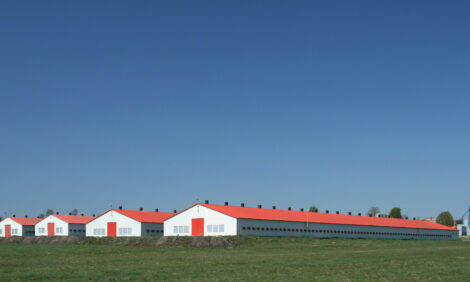



Transporting livestock and poultry in hot weather
NORTHERN IRELAND - Advice on transporting farm animals during spells of hot weather has been issued by the Department of Agriculture and Rural Development.
Transporting livestock and poultry in hot weather - NORTHERN IRELAND - Advice on transporting farm animals during spells of hot weather has been issued by the Department of Agriculture and Rural Development.
Source: Department of Agriculture and Rural Development - 1st July 2005
The department wishes to remind farmers that at this time of year transporting livestock and poultry can cause special problems, particularly when lorries of metal construction are stationary and exposed to the sun for long periods.
Bearing in mind that more animals found dead at their destination are killed by heat stress than any other cause, hauliers are advised to take the following steps to reduce the risk of subjecting livestock to heat stress in transit:
- Avoid journeys of long duration and if possible travel in the morning or evening when temperatures are lower. This is of particular importance when catching and conveying poultry.
- Ensure fans are used in chick delivery vans.
- Ensure all flaps are open over ventilation openings.
- Ensure pen partitions of open construction are used to allow free airflow within the vehicle.
- Allow adequate floor and air space around each animal. This may require a reduction in the total number of animals normally carried. In the summer, make plans to adjust the stocking of poultry on the basis of an up-to-date weather forecast.
- Avoid leaving animals in a stationary vehicle for any length of time in very hot weather. For example, on board a stationary poultry transporter the air temperature in the immediate vicinity of the birds is often 10°C more than that outside the vehicle.
- Plan the supply of poultry to the slaughterhouse so that they arrive 'just-in-time'. However, if this is unavoidable, hauliers are advised to:
- Park in the shade away from high objects - such as walls, which restrict airflow.
- Open the rear door to allow greater airflow through the whole length of the vehicle.
- If there are any escape proof fittings, open all access doors.
- If possible, spray the vehicle with cold water and in the case of pigs, spray the animals as well.
- Avoid excessive disturbance to stock during loading, carriage and unloading. Ideally, supplementary fans should be fitted in the walls of houses and switched on during loading in hot weather whilst ventilation slots are closed to darken the house.
- Park in the shade away from high objects - such as walls, which restrict airflow.
Source: Department of Agriculture and Rural Development - 1st July 2005









